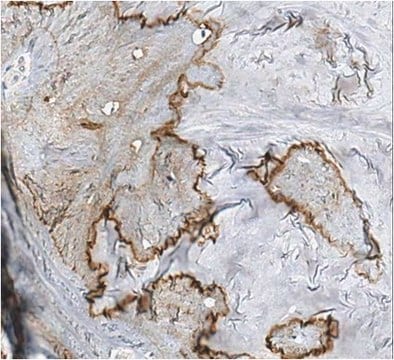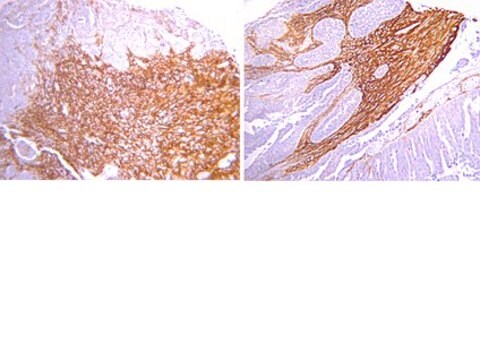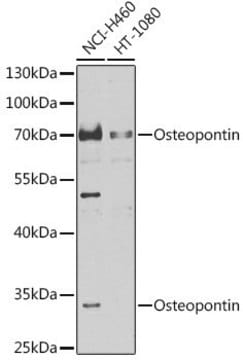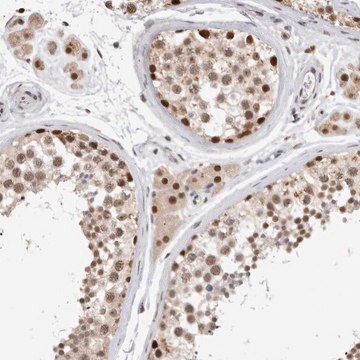AB10911
Anti-Osteocalcin Antibody
serum, from rabbit
Synonim(y):
Bone Gla protein, Gamma-carboxyglutamic acid-containing protein, bone gamma-carboxyglutamate (gla) protein (osteocalcin)
About This Item
Polecane produkty
pochodzenie biologiczne
rabbit
Poziom jakości
forma przeciwciała
serum
rodzaj przeciwciała
primary antibodies
klon
polyclonal
reaktywność gatunkowa
human, rat, mouse
metody
immunohistochemistry: suitable
western blot: suitable
numer dostępu NCBI
numer dostępu UniProt
Warunki transportu
wet ice
docelowa modyfikacja potranslacyjna
unmodified
informacje o genach
human ... BGLAP(632)
mouse ... Bglap(12096)
rat ... Bglap(25295)
Opis ogólny
Specyficzność
Immunogen
Zastosowanie
Jakość
Western Blot Analysis:
1:500 - 1:5,000 dilution of this antibody detected osteocalcin in 10 μg of human heart lysate.
Opis wartości docelowych
*Band of ~22 kDa is observed. The difference between observed and expected band may be due to post-translational modifications.
Powiązanie
Not finding the right product?
Try our Narzędzie selektora produktów.
polecane
Kod klasy składowania
10 - Combustible liquids
Klasa zagrożenia wodnego (WGK)
WGK 1
Certyfikaty analizy (CoA)
Poszukaj Certyfikaty analizy (CoA), wpisując numer partii/serii produktów. Numery serii i partii można znaleźć na etykiecie produktu po słowach „seria” lub „partia”.
Masz już ten produkt?
Dokumenty związane z niedawno zakupionymi produktami zostały zamieszczone w Bibliotece dokumentów.
Klienci oglądali również te produkty
Nasz zespół naukowców ma doświadczenie we wszystkich obszarach badań, w tym w naukach przyrodniczych, materiałoznawstwie, syntezie chemicznej, chromatografii, analityce i wielu innych dziedzinach.
Skontaktuj się z zespołem ds. pomocy technicznej









